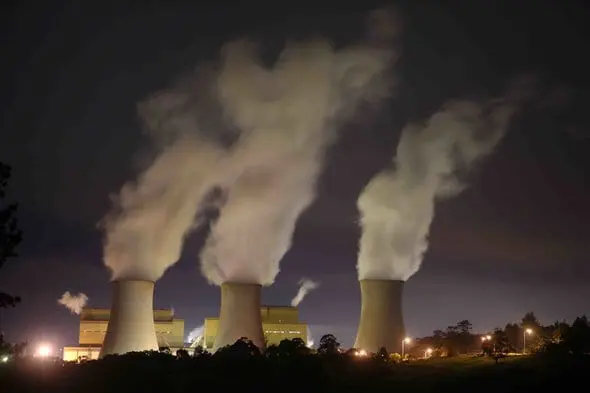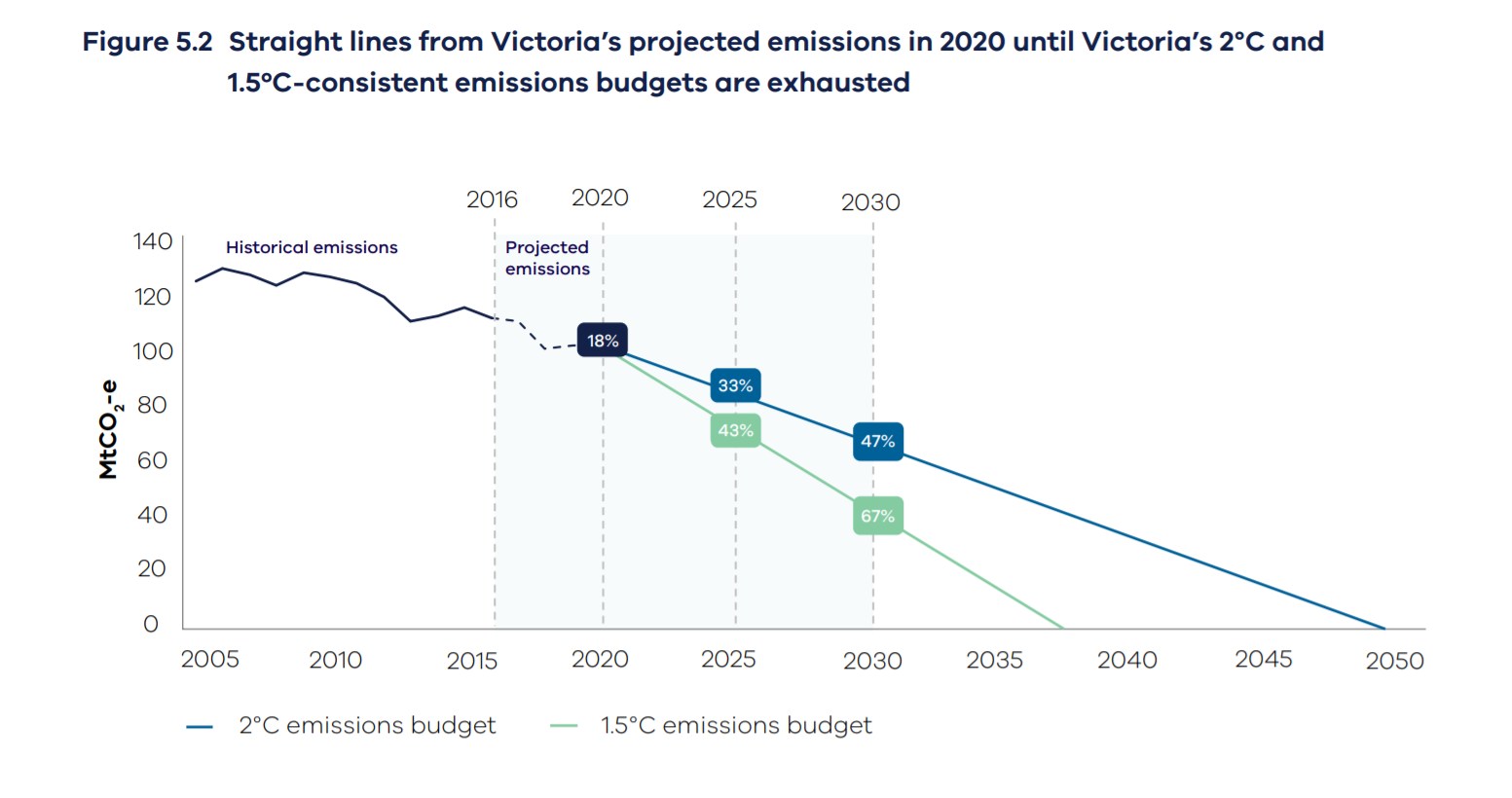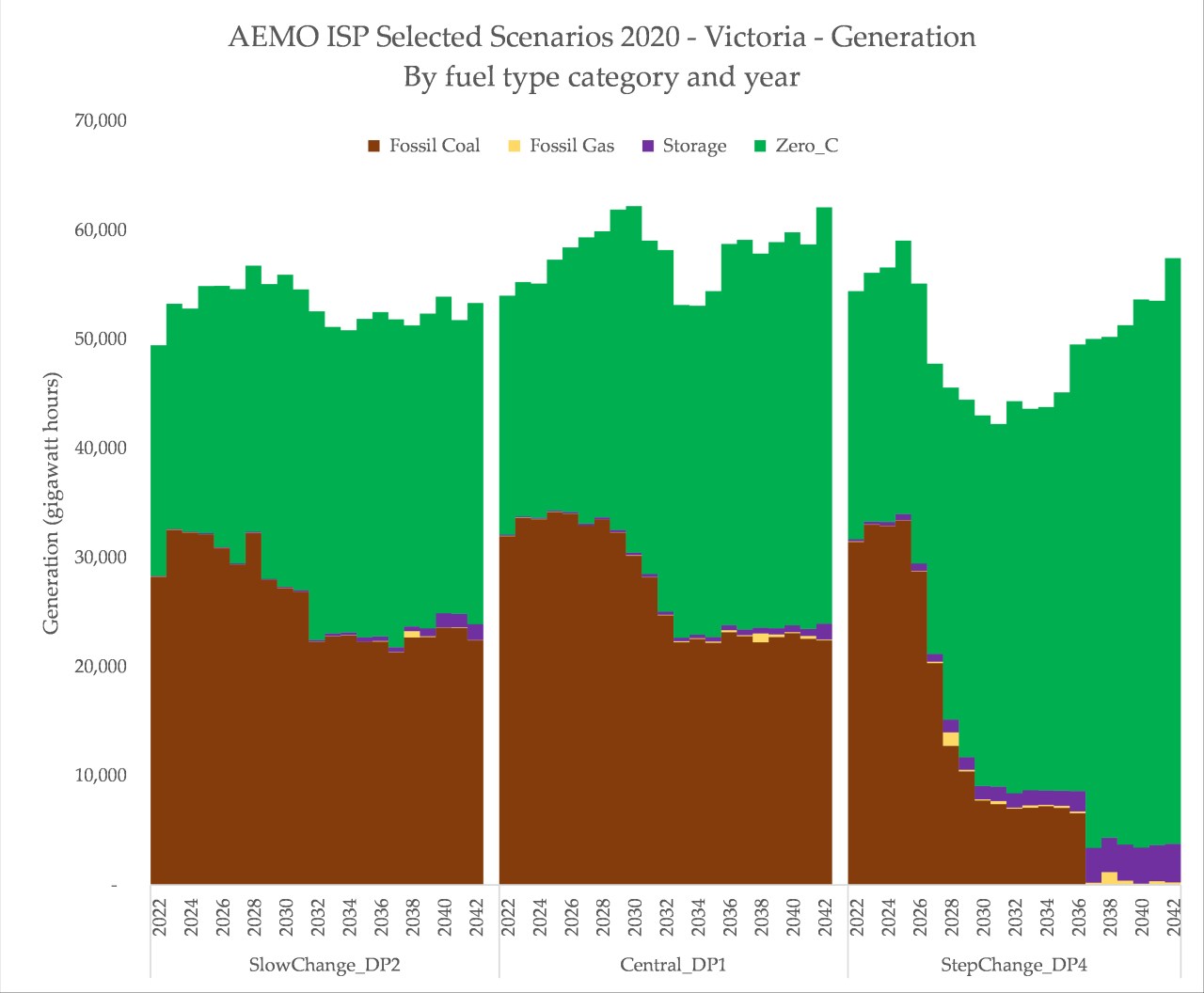Over the weekend, the state of Victoria announced a collection of new climate targets. They’re relatively straightforward. The state’s leadership has already cut the state’s emissions by 24.8% up to the end of 2019 (compared to 2005 levels), and is promising to further cut emissions by 28-33 percent by 2025 and 45-50 percent by 2030.
It has drawn a mixed range of responses. Business groups welcomed it, hailing it as “sensible”, while environment groups have challenged it, criticising it as insufficient.
It is worth diving briefly into why this argument exists, and what it means for the key stakeholders of the climate change problem (that is, anyone living on the surface of planet Earth).
Which target to set?
As RenewEconomy editor Giles Parkinson highlighted over the weekend, Victoria’s targets at the lower end of a range suggested in a report chaired by for Labor minister Greg Combet. That reports sets a range that looks like this:
It’s long, dense report and it’s worth noting that it was published over two years ago. A lot has changed since March 2019. Renewable energy is significantly cheaper. Fossil fuels are significantly more costly. And the world as a whole and Australia as a country, has continued to eat up its emissions budget with total disregard for climate action.
It delves into the all-important question of the quantity of greenhouse gas emissions Victoria can be allowed to emit if it’s to align with global emissions cuts required to limit warming to certain degrees. This is important, because it explains why some people have welcomed Victoria’s new targets, and other people have challenged them as badly unambitious.
The report actually explains what happens if a 45% by 2030 target is set: Victoria eats up 100% of its total remaining carbon budget to align with a global 1.5C goal, by 2030. If it hits 60% in 2030, it’ll have to reach zero emissions by 2035 to not blow past its 1.5C budget.
 There’s a very significant difference between a 2°C world and a 1.5°C world. Extreme heat is 2.6x worse. Crop yields are 2.3x worse. Damage to ecosystems is 1.86x worse. And the Combet report admits as such – but actively decides to rule out 1.5C anyway. “While climate science clearly demonstrates that a 1.5°C world would be much safer, with significantly lower impacts than 2°C of warming, it represents an ambition that has not fully crystallised yet”, it says, and toys with the idea of a 75% by 2030 emissions reduction target before quickly discarding it from its core modelling.
There’s a very significant difference between a 2°C world and a 1.5°C world. Extreme heat is 2.6x worse. Crop yields are 2.3x worse. Damage to ecosystems is 1.86x worse. And the Combet report admits as such – but actively decides to rule out 1.5C anyway. “While climate science clearly demonstrates that a 1.5°C world would be much safer, with significantly lower impacts than 2°C of warming, it represents an ambition that has not fully crystallised yet”, it says, and toys with the idea of a 75% by 2030 emissions reduction target before quickly discarding it from its core modelling.
Victoria’s new emissions targets seem to be roughly aligned with that philosophy: targets aligning with a 1.5C target are considering to be so ambitious and so ‘economy wrecking’ that they exceed the danger presented by the amount of warming lower ambition would result in.
A rapid coal phase-out is the great unseized opportunity
It is hopefully only a matter of time before Australia catches up with what most of the world is coming to realise: no grid in the world really needs coal. As more people realise that its necessity has been completely manufactured, and that cutting it out of power systems can bring an immediate, massive positive hit to emissions reductions ambitions, the entire planet will change far faster than we think.
Currently, we know that a global coal phase-out is required between 2030 and 2035 to keep warming under 1.5°C. In Australia, that deadline is a 2030. But Victoria’s coal-fired power stations will overstay this deadline, as shown in the various scenarios of AEMO’s ISP:
In AEMO’s ‘Central’ scenario, Victoria’s coal-fired power stations simply run to their retirement age. At the time of the 2020 ISP, that was spread between 2029 and 2033, but a recent deal between Energy Australia and the Victoria government brought that forward to 2028. But there seems to be some secret inclusion in that deal to ensure that Yallourn doesn’t close any earlier than 2028 – and that’s going to likely have some real consequences for emissions.
That first dip in the brown curve in the chart above, in the central scenario, is Yallourn closing – but the bulk of Victoria’s emissions, in the Loy Yang A and B power stations, remain open and churning out extreme quantities of greenhouse gas emissions until 2048 – two years prior to the net zero deadline!
Victoria’s 40% by 2025 and 50% by 2030 renewable energy targets are obviously playing a role in driving the growth of new wind and solar in the state. But the gap between these current climate ambitions and a 1.5°C alignment exists mostly due to, very simply, three extremely polluting machines that could be fully replaced today, and definitely replaced by 2030, with sufficient ambition from the Victorian government.
Victoria’s targets ought to be celebrated – they’re a substantial increase in ambition. But there ought to be no nervousness around total ambition on this challenge. Every megatonne counts. The situation for coal power is decaying fast and getting faster every day. And every coal-fired power station in the world overstayed its welcome long ago. It’s time to figure out a plan to expunge them from Victoria’s – and Australia’s power grids ASAP.
See also: Victoria embarrasses Morrison with new climate target, but activists want more












